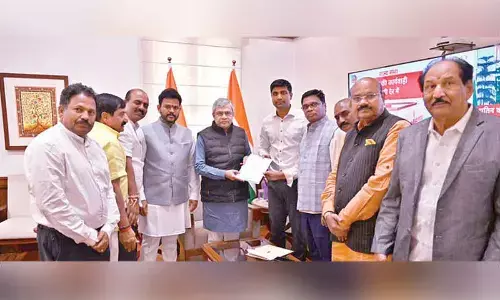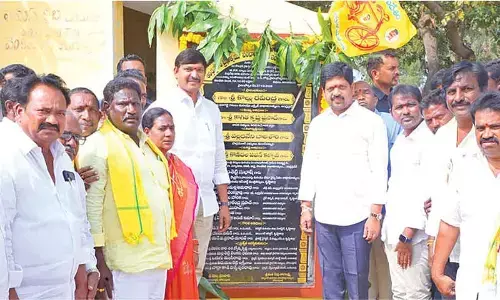No voter should be excluded: SC seeks EC’s stand

Enhanced Voter Limit In Polling Stations
New Delhi: The Supreme Court on Monday sought Election Commission's response on a PIL challenging its decision to increase the maximum number of voters from 1,200 to 1,500 at every polling station, saying that no elector should be excluded.
While asking the poll panel to clarify its stand, a bench comprising Chief Justice Sanjiv Khanna and Justice Sanjay Kumar said, "We are concerned. No voter should be excluded."
The bench therefore directed senior advocate Maninder Singh, representing the poll panel, to file a short affidavit explaining the rationale behind the decision to increase the number of voters per polling station.
Singh said the bench knew about the consistent allegations on EVMs, adding, "They will keep on coming. Polling has been happening like this since 2019 and political parties are being consulted before this in every constituency." The senior lawyer said polling stations could have multiple polling booths and political parties were consulted in each constituency when the total number of voters was raised per EVM. Singh further said voters were always permitted to cast their votes, even beyond the prescribed time.
The bench, which will hear the matter on January 27, 2025, asked the EC to provide a copy of its affidavit to the petitioner before the next date of hearing. The PIL, filed by Indu Prakash Singh, challenged two communications issued by the EC in August, increasing the number of voters per polling station in each constituency across India. The plea said the decision to increase the number of voters per polling booth was arbitrary and not based on any data. On October 24, the top court refused to issue any notice to the poll panel but allowed the pet itioner to serve the copy to the standing counsel of the poll panel so that its stand on the issue is known. Senior advocate Abhishek Singhvi, appearing for the petitioner, contended that increasing the number of voters from 1,200 to 1,500 would lead to the exclusion of underprivileged groups from the electoral process as an individual would take longer to cast their franchise.
He submitted longer queues and waiting time at the polling stations would dissuade voters from going to cast their votes. The bench, however, said the poll panel wanted more participation and with the use of EVMs, it took a shorter time compared to ballot papers as the poll panel intended to considerably reduce the time taken to cast votes by increasing the number of EVMs at booths. The petitioner, however, said the poll panel’s decision would impact voters during the assembly elections in Maharashtra and Jharkhand (since concluded) and Bihar and Delhi to be held in 2025.
The petitioner said elections were normally held for 11 hours and it took around 60 to 90 seconds to cast a single vote, and therefore 660 to 490 persons could cast their vote in a day at one polling station with one EVM. Considering the average voting percentage to be 65.70 per cent, it was perceivable that a polling station prepared to accept 1,000 electors, saw about 650 people turning up, said the petitioner. The plea said there were booths where the elector turnout was in the range of 85-90 per cent. “In such a situation, about 20 per cent of voters will either end up standing in the queue beyond the voting hours or due to long waiting times, will abandon exercising their right to vote.



















